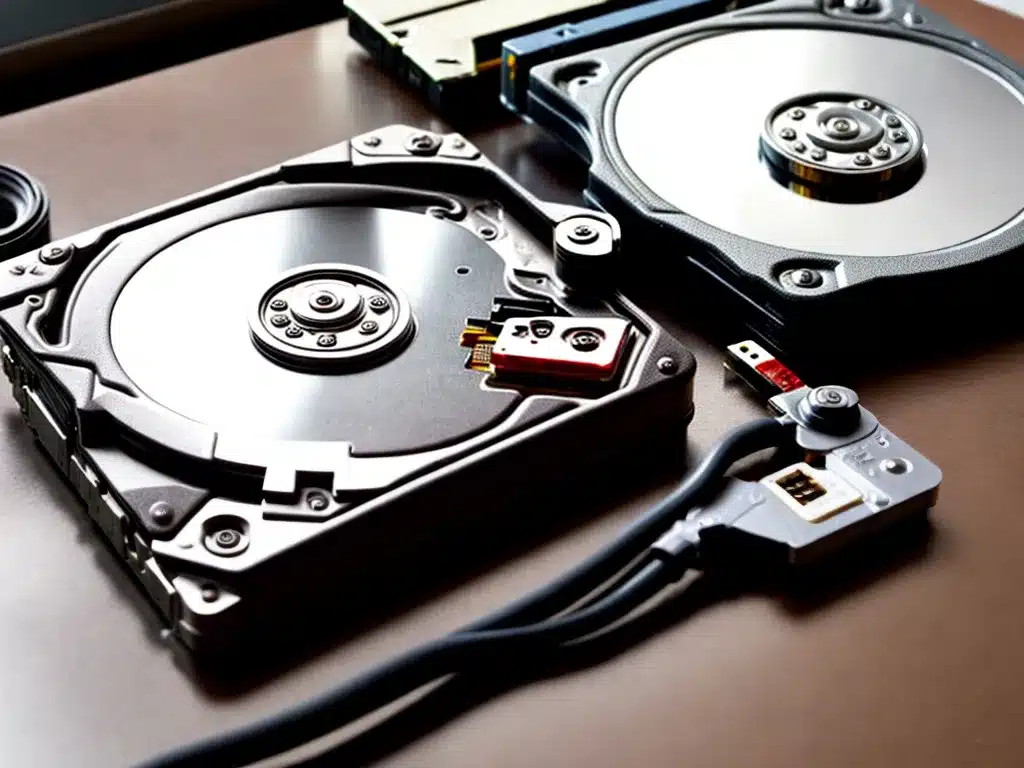
External hard drives provide a convenient way to store and backup large amounts of data. However, these devices can unexpectedly stop working or fail to power on. When your external hard drive won’t turn on, recovering the data yourself can be challenging without proper tools and know-how.
Why External Hard Drives Stop Working
Several factors can prevent an external hard drive from powering up:
Logical Failure
A logical failure occurs when the drive’s file system or partition table becomes corrupted. This prevents the operating system from recognizing the external drive. Logical failures account for over 75% of external hard drive issues.
Common causes include:
- Accidental file deletion
- Virus or malware infection
- Improper ejection of the external drive
- Power outage during a write operation
Mechanical Failure
A mechanical failure stems from a physical problem with the hard drive itself. Typical causes are:
- Head crash – read/write heads touching the platters
- Motor failure – spindle motor stopping
- Circuit board damage – PCB controller malfunctioning
These mechanical failures often generate audible signs like clicking or beeping noises.
Power Supply Problems
Power supply issues prevent the drive from receiving electrical power to operate. The USB port, cable, or external power adapter could be damaged. Insufficient power to the drive will cause it not to turn on.
DIY Data Recovery Approaches
When an external hard drive fails to power on, there are some DIY troubleshooting steps you can take to recover data:
Test on Another Computer
Connect the unresponsive external drive to another computer using a different USB port and cable. This will determine if the issue is with the drive or the original computer.
Try a Power Adapter
For externally powered drives, use the manufacturer’s power adapter to isolate whether the problem is due to inadequate USB bus power.
Remove from Enclosure
Open the external casing and remove the internal hard drive. Then, mount the hard drive directly in a desktop computer to access the files.
Disk Utilities
Run the native disk utilities of your operating system (e.g. Windows File Explorer) to scan for errors and attempt data recovery.
Data Recovery Software
Use data recovery software, like Recuva or TestDisk, to interface with the drive and restore files. This works best for logical failures.
However, these DIY approaches have limited success when the external hard drive has a mechanical failure or serious file system corruption. Professional data recovery services are required in those situations.
Professional Data Recovery Service
For external hard drives that do not power on, utilizing a professional data recovery company optimizes the chances of retrieving your data. Here is an overview of their data recovery process:
Evaluation
The drive is examined to determine the cause of the failure and if the data is recoverable. This includes testing the PCB controller board.
Data Extraction
A specialized cleanroom and proprietary data recovery tools are used to rebuild drive components and image the drive platters.
Parts Replacement
Failed or damaged parts like the read/write heads or motor are replaced in order to gain access to the drive’s data.
File System Repair
Advanced software utilities are used to repair corrupted file system tables or directory structures so files can be accessed.
Data Recovery
Once the drive is stabilized and imaged, the files are located and transferred to another medium for return to the customer.
This technical process ensures the highest chance of recovering data from external hard drives with physical damage or file system problems.
Choose a Reputable Data Recovery Company
With sensitive personal or business data at stake, it’s important to choose an established and reputable data recovery company. Here are key criteria to consider:
-
Experience – Look for years of experience recovering data from failed drives. This demonstrates technical capability.
-
Cleanroom Facility – A true cleanroom provides an environment that limits dust particles during internal hard drive repairs.
-
Security – Check that the company uses adequate physical and digital security measures to protect recovered client data.
-
Certifications – Leading data recovery firms have ISO certifications that validate their expertise and procedures.
-
Track Record – Online customer reviews can give insight into the effectiveness and service levels of a company.
-
Cost – Quoted recovery costs should be clearly outlined. Beware of firms that nickel and dime with vague or hidden fees.
Choosing an experienced data recovery company gives you the greatest chance of getting your files back when an external hard drive fails to turn on. With the proper approach and techniques, data recovery is possible in most cases. Just be sure to avoid further damage to the drive before bringing it in for professional recovery.












